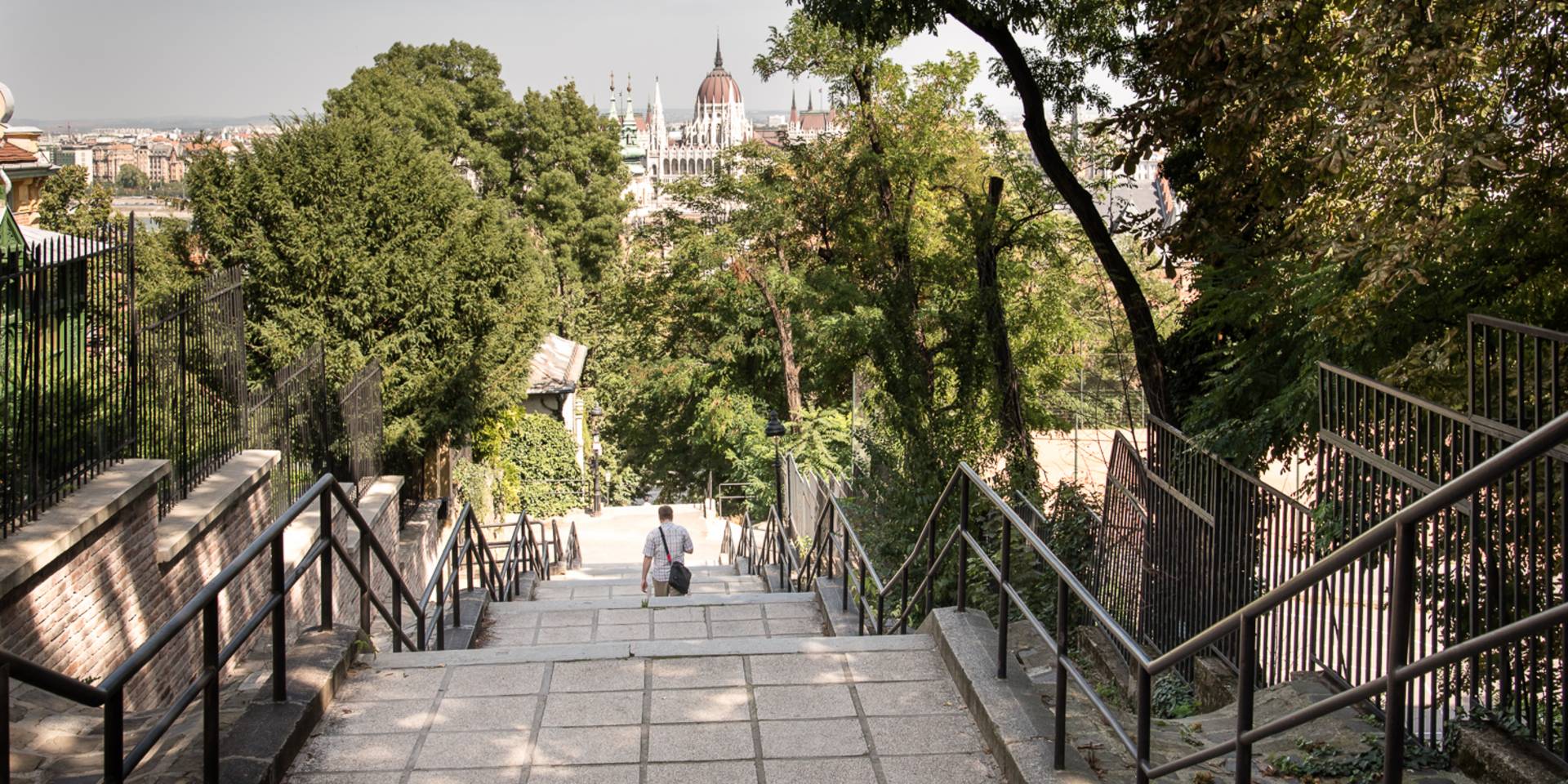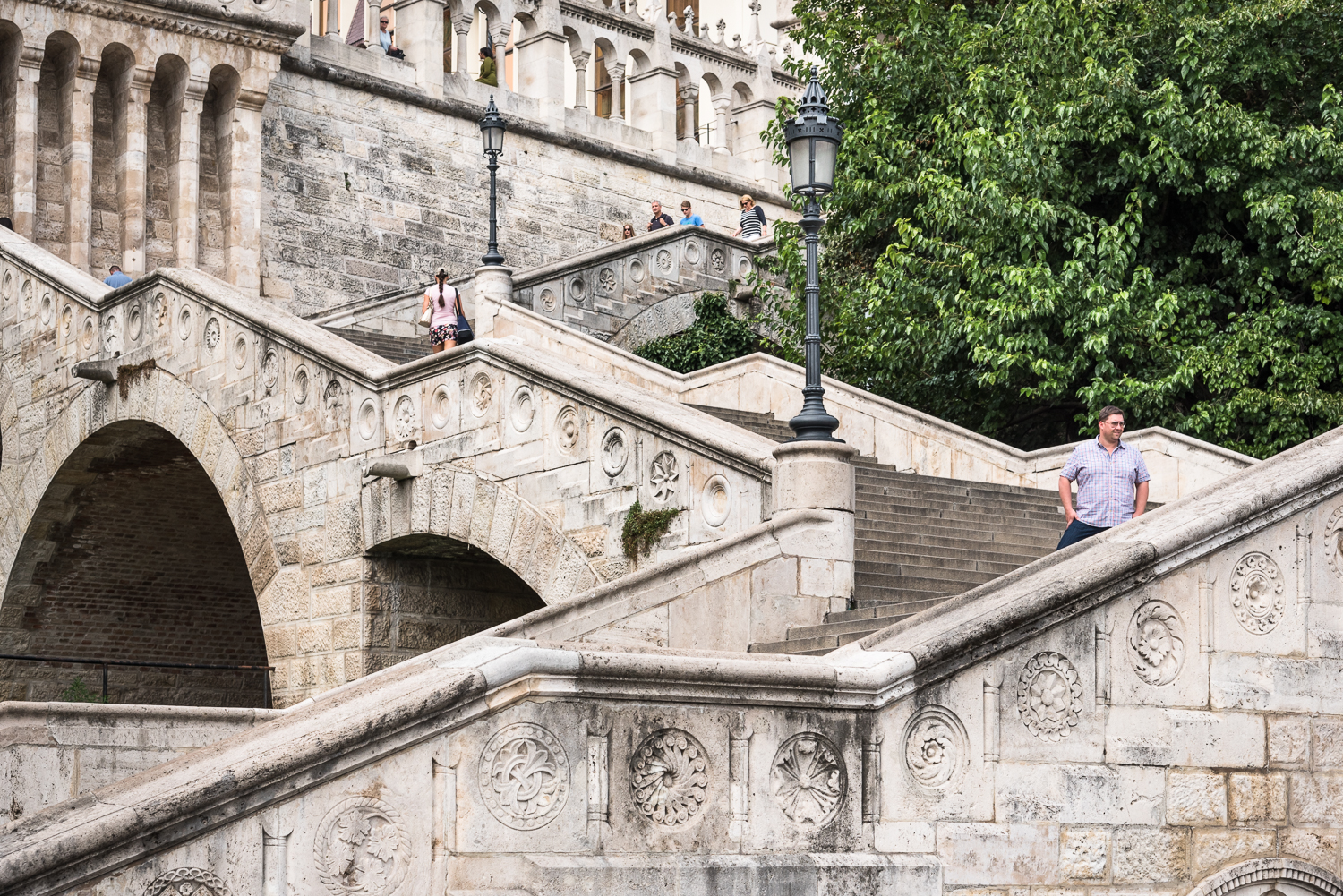1. Ómátyásföld (Old Mátyásföld)
There are plenty of exciting places to visit in Budapest beyond the main sights – and we're not just saying that because we grew up in one of the suburbs. Ómátyásföld is one of them. Situated in the 16th district, in the eastern part of Budapest, it's a neighbourhood that boasts its own Villa Quarter. Walk along shady lanes, such as Pilóta utca, and keep an eye out for Art Nouveau and elegant eclectic villas and richly carved wooden-framed Alpine chalets. Most of the villas in the former vacation village, the inn, the baths, the ballroom, and the church are the work of Joseph Paulheim, and one of the most famous is the Dozzi villa, with its vines, flowers, and peacocks, built by Italian salami maker Giuseppe Dozzi.
How to get there? Hop on metro line 2 at Deák Ferenc tér until Örs Vezér tere, then change to HÉV (h8 or H9) until Mátyásföld, repülőtér (35 minutes).
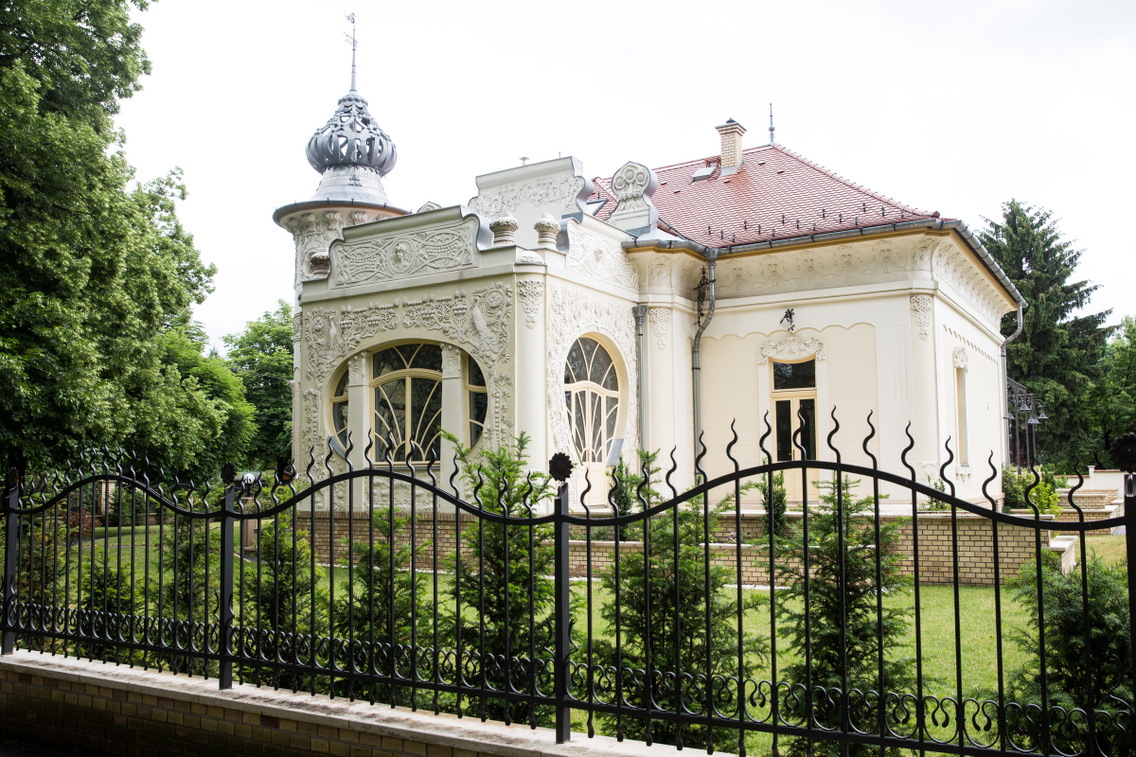
2. Zugliget
Before the tram system, as we know it today, horse-drawn vehicles were used in Budapest. And there is a charming reminder of those days in the Buda Hills, Zugliget. The building, with its lace-carved wooden balustrade and wrought-iron railings, was built in the style of a Swiss villa as the terminus of the horse-drawn railway between Chain Bridge and Zugliget in 1868. The turn-of-the-century hillside station stood unused and increasingly dilapidated for many years after a serious accident in 1900 led to the tram terminus being moved to a less sloping site. The building is now a cultural and events centre and home to the Hegyvidéki Local History Collection, but you'll also find a great dessert shop here called Eber. While in the area, you can further discover the hills, hop on the Chairlift (from April 1st), and enjoy a hike in the woods.
How to get there? Take metro line 2 at Deák Frenc tér until Széll Kálmán tér, then change to bus 22/222/222A until Labanc út (28 minutes).
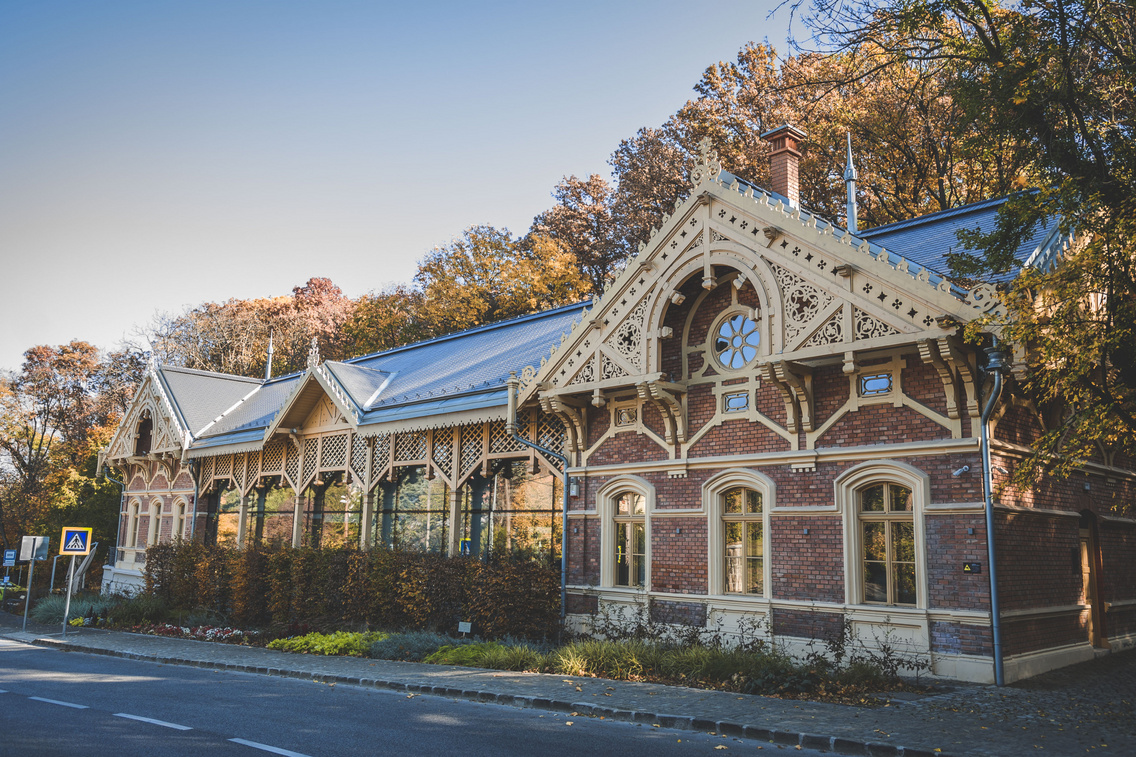
3. Villas in Naphegy
While villa walks are usually associated with the area around Gellért Hill and Sváb Hill, it is worth taking an adventure to Naphegy (Sun Hill) on the Buda side. Here, you will find fine examples of turn-of-the-century villa architecture that served as homes to artists and former celebrities. Writer and poet Margit Kaffka, sculptor János Fadrusz, and writer Miksa Fenyő all lived here. While an ivy-spread neo-Baroque villa in Dezső utca is one of our favourites, Lisznyai utca features so many wonderful blocks that it's hard to choose between them. In addition to the historic and eclectic buildings, there are also examples of early modern architecture: the simple shapes of Tigris utca 42, with its round window, thin columns, and open shading of the balcony, are reminiscent of Lajos Kozma's architecture.
How to get there? Hop on bus 216 at Deák Ferenc tér until Dózsa György tér (22 minutes).
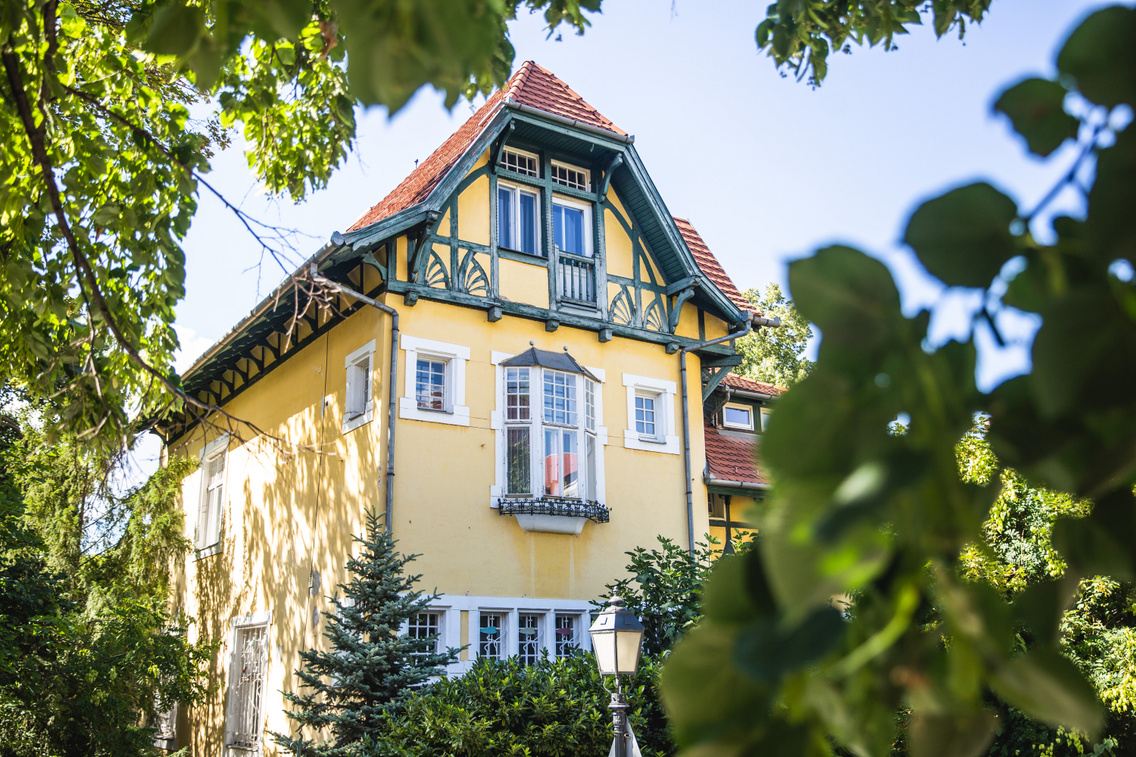
4. The Turkish Garden of the Buda Castle
The Turkish Garden at the Buda Castle was recently completed, and it's so hidden we couldn't find it at first. It's precisely this isolation that we love about it because here you can sit on benches next to fig trees, gaze in the distance, admire the panorama, or read in complete silence. The Moorish-style fountain, the beautifully restored tower of Karakas Pasha, and the abundance of plants add a slight Oriental touch to Buda, making you feel as if you have travelled to a faraway land. The tiny oasis is located behind the Royal Riding Hall.
How to get there? Take bus 216 at Deák Ferenc tér until Tábor utca, then walk towards 'Karakas pasa tornya' (17 minutes).
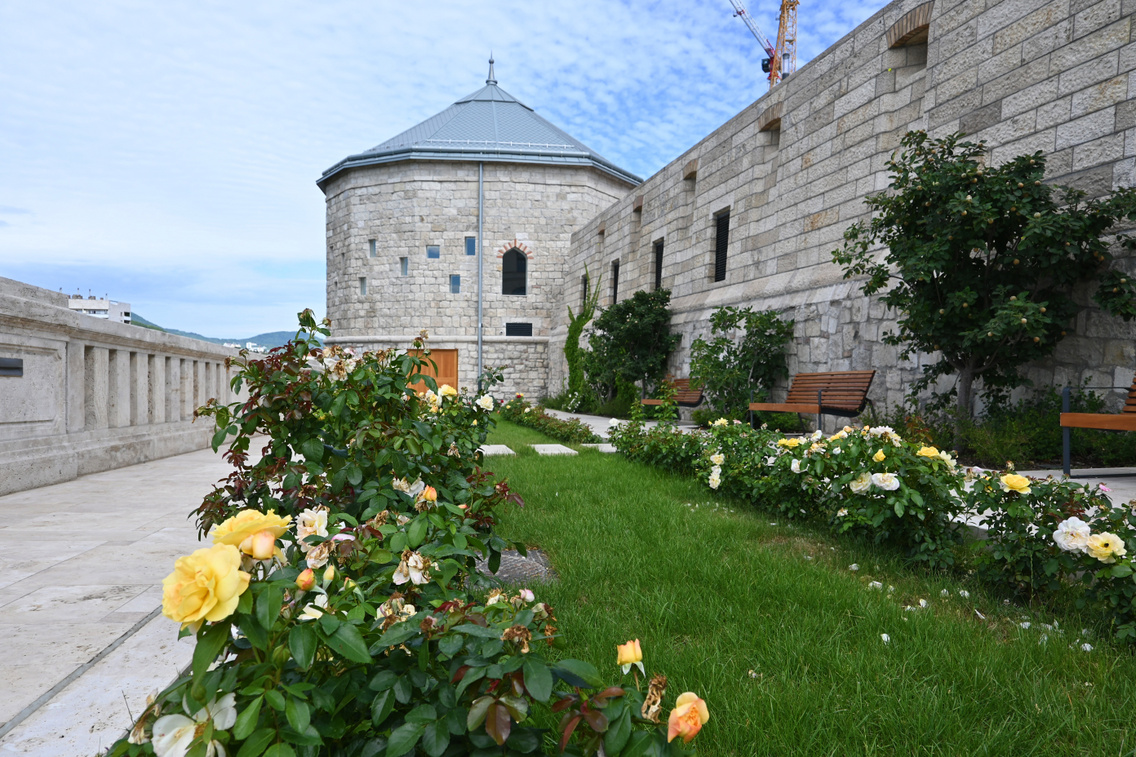
5. Secret Garden in Virág Benedek House
There are hardly any buildings or streets left that still carry the atmosphere of the old Tabán. One of the last few is the Virág Benedek House on Döbrentei utca. Walk through the huge green gate and you'll find a lovely little courtyard paved with cobblestones, a huge walnut tree, and lush green bushes, where you can escape the heat in the summer. Few people know that anyone can come in here for a little retreat from the world, to relax or read. But if you're looking for a social experience, you can also attend workshops, folk dance events, or concerts. Once inside the courtyard, you'll soon realise that there is actually not one, but three or four buildings, which once housed inns, residences, and a monastery.
Hot to get there? Take bus 16 at Deák Ferenc tér until Clark Ádám tér, then walk 10 minutes (17 minutes in total).

5+1 Stairs of the Buda Castle
There are quite a few ways to go up to the Castle, but if you don't want to ride bus 16 in a crowd or queue for the Buda Castle Funicular, it's worth walking up one of the stairways. As well as meeting only a few people on the way, you'll have a great view back up. One of our favourites is the Ilona stairs, offering a stunning view of Pest (see our cover photo). Also, keep an eye out for a gorgeous eclectic building with an enclosed balcony on the corner of Hunfalvy utca. The cobbled stairs of Kagyló utca are also worth a stroll, with green plants lining the path. At the end of the street is Európa Park, and if you keep walking, you'll soon arrive at the Castle through the Vienna Gate.
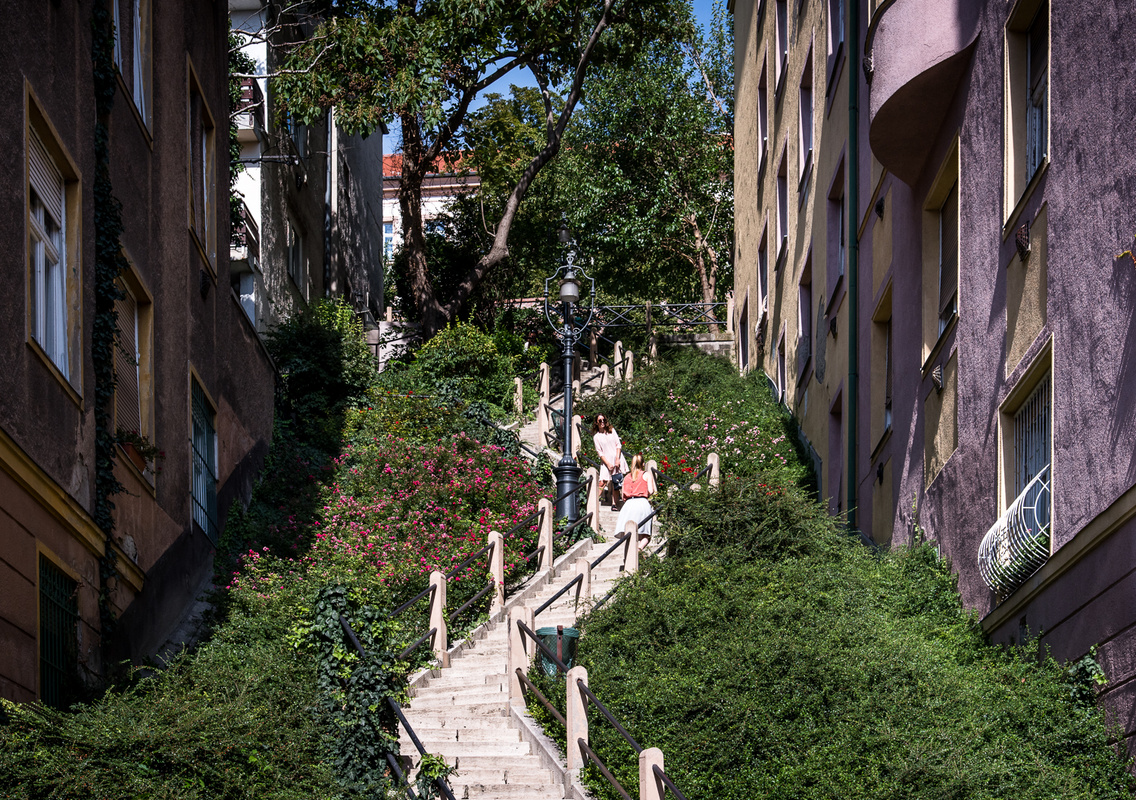
(Cover photo: Norbert Juhász - We Love Budapest)
